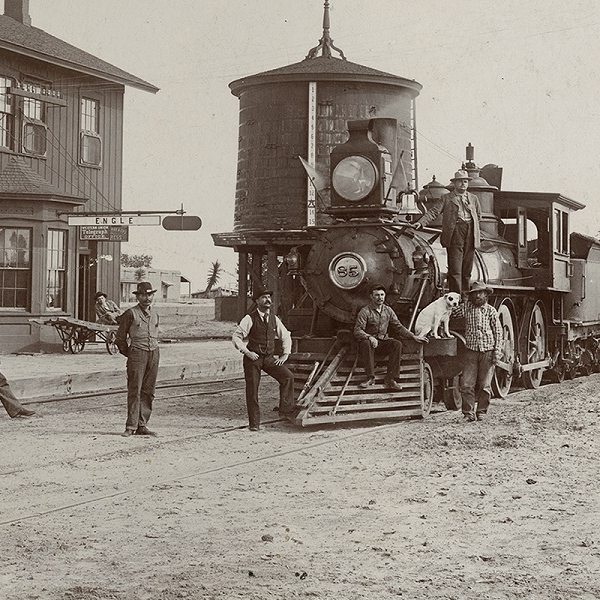Artists of the Portal Program must adhere to strict guidelines regarding the type and quality of materials used in their art and may only sell items handmade by the vendors themselves. Mass-produced or imported items are strictly prohibited. Maintaining this level of excellence is a primary concern of program participants and museum staff.
Please ask questions. The more you know about each artist, how a piece is made, and an artist's materials, the more you will appreciate its craftsmanship and beauty.
Look at the Maker’s Mark
All items offered for sale have a maker’s mark. Vendors can point out these distinctive “signatures” for you. A maker's mark enables potential customers to give distinction to who the artist is and allow to gain a clientele with the knowledge of the mark on art piece for further relationships/purchases from the artist. This also, is a authenticity of being Native American made. Some vendors also have business cards. It is important to know the name or maker’s mark of any artist or craftsperson you might wish to contact in the future because there are no assigned spaces under the portal.
Pricing of Arts and Crafts
Some program participants negotiate prices; many do not. Please remember that authentic Native American arts and crafts are labor intensive and handcrafted objects cost more than those that are machine made.
Metalwork
Diné, or Navajos, took up metalsmithing in the mid-nineteenth century. They were the first Native people in the American Southwest to do so. However, by the turn of the century, the craft had spread to Zunis, Hopis, and Rio Grande Pueblos. The earliest silver used was Mexican coin silver.
Today, program participants make jewelry of silver, gold, copper, and brass. All silver used is sterling—that is, 92.5% pure. Silver-plate over base metals and nickel alloy may not be sold on the portal. Silver-plated metals appear overly shiny and are often easily broken. Gold is becoming increasingly common in Native American jewelry. Program rules permit gold, gold-fill (12KGF or 14KGF) and gold overlay. Many jewelers get their start working with brass. More experienced jewelers may also use this less costly metal to provide buyers with less expensive items.
Some jewelers cut and shape the stones used in their work; others use pre-shaped, polished stones, called “cabs” (cabochons). Certain types of attachments, called “findings”, may also be used to embellish metalwork.
Pottery
Native Americans have been making pottery in New Mexico for over 1500 years. All pottery sold on the portal is made of clay gathered on the potter’s own reservation, then hand-constructed, and fired out-of-doors in a traditional manner. Under current rules, kiln-fired pottery is prohibited. The pottery may be stone polished or coated with a protective sealant. Some is decorated with natural mineral or vegetal paints, others with commercial paints following an innovation introduced in the 1920s.
Stones, Shells, and Beads
Turquoise, the most common stone under the portal, has been used for millennia by southwestern Native Americans for adornment, as a trade item, and for ceremonial purposes. It comes in various forms and many grades of quality. Natural turquoise is unaltered except for shaping and polishing. It is most often set in metal jewelry. Stabilized turquoise is a genuine stone hardened to make breakage less likely and is used in work where stones are unprotected by metal settings.
The sale of reconstituted turquoise, a combination of turquoise dust and plastic, is prohibited under the portal.
Over time, Native American jewelers have incorporated new materials into their work. A variety of shells and stones are now commonly found in pieces sold on the portal. These include but are not limited to mother-of-pearl, spiny oyster shell, olive shells, clam shell, melon shell, coral, jet, lapis, jasper, agate, hematite, sugilite, serpentine, black onyx, pipestone, and malachite. If you have questions about the materials, ask the vendors. They can identify the stone or shell, tell you where it is from, and how it is worked.
Heishi (he-she) are necklaces of delicate, disk-shaped shell beads. They are made primarily by Santo Domingo artisans who are renowned for this type of work. The heishi sold under the portal are cut, drilled, and ground by hand. This is a painstaking process and a single necklace may require the fashioning of hundreds of tiny beads.
Glass beads, introduced to the region as a trade item, have been used for decoration by Native Americans for centuries.
Sandpainting
The sale of decorative sandpaintings in substantial numbers dates from the early 1960s. Sandpaintings under the portal are made using natural pigments that are ground by the vendors themselves. Often vendors have samples of the original stones from which the various pigments are derived for visitors to examine. The surface of some sandpaintings is coated with a protective sealant.
Other Goods
Other arts and crafts represented under the portal include leatherwork, weavings, carvings (both stone and wood), drums, drawings, and paintings. Others sell food items such as bread baked in traditional ovens, tamales, or piñon nuts. Labels providing the maker’s name and a list of ingredients are on all food sold. Any vendor selling food must have a food handler’s card, required by city health regulations, displayed on their cloth.





